Rugby, a real tough guys’ sport, is very popular worldwide. The sport’s history is illustrious, and even as time passed, it remained at the top of the pile as arguably the most physically demanding team sport. Yet, alongside the athletic prowess of top players, there’s no shortage of strategic depth in all high-level games. So, it’s no surprise that rugby captivates millions of fans. The dynamic blend of strength, speed, and teamwork is something to marvel at. However, many newcomers to the sport and even some enthusiasts may not realise that rugby is not a single discipline. Actually, it is divided into two distinct codes: Rugby League and Rugby Union.
Each code has its own set of rules and promotes a unique style of play and cultural philosophy. It’s like two different versions of rugby sometimes. The differences can influence player behaviour and game flow. The distinction between these two forms adds variety to the game but can also lead to confusion. This article aims to help separate these codes for both novices and those with more in-depth knowledge too.
Historical Background of Rugby
Rugby’s origins can be traced back to the early 19th century. The predecessor to the invention of the Rugby School in England was football, then a reasonably new yet rapidly growing sport.
The newly introduced run-and-gun physical team activity quickly gained popularity, leading to the standardisation of rules and the formation of the first governing body, the Rugby Football Union (RFU). That happened in 1871 and is considered the sport’s birthdate.
All seemed well for a while until a dispute occurred. Over time, it became severe and caused the organisation to split in 1895. The main reason was financial disputes over compensation for players, leading to the creation of the Rugby League.
This break was spearheaded by clubs in Northern England that formed the Northern Rugby Football Union, now known as the Rugby Football League (RFL). Officially speaking, 22 teams resigned from the RFU to form their alternative union.
The 1895 division marked the beginning of the Rugby League as a separate code. The RFL quickly grew by adapting professional status and different rules, while the Rugby Union maintained its amateur-first spirit until the 1990s.
So, to sum up:
- Rugby was created in the 19th century
- At first, there was one set of rules and one main governing body – the Rugby Football Union (RFU)
- Disputes over compensation caused many teams to resign from the RFU and start their own Rugby Football League (RFL).
Rugby League vs Union – the Rules
Let’s talk about the rules and details. Even though both leagues play 80-minute-long matches, it doesn’t take long to notice differences. The very first point of emphasis is the player count.
- Rugby Football League (RFL) rules allow for 13 Players per side
- The pitch is limited to 122×68 m
- Rugby Football Union (RFU) rules allow for 15 Players per side
- The pitch is limited to 144×70 m.
It is crucial to note that the player count tremendously impacts the flow of the game, dynamics, and tactical decisions.
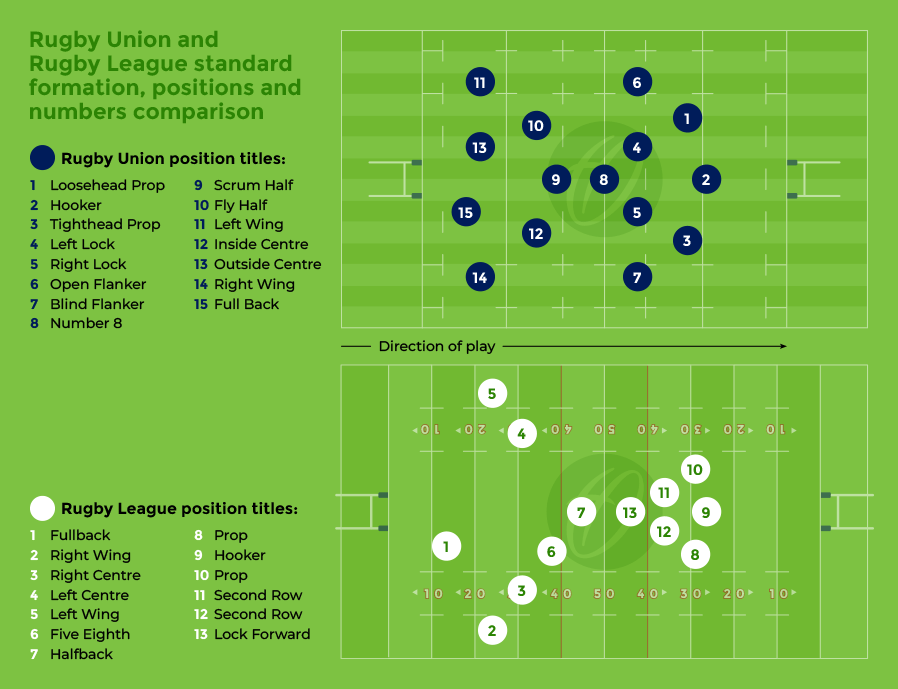
This image properly illustrates the main differences.
Another serious difference in scoring.
In the RFL:
- A try is worth 4 points
- Conversions add 2 points
- Penalty kicks also give 2 points
- A drop goal contributes 1 point.
Alternatively, in the Rugby Union or the RFU:
- A try is worth 5 points
- Conversions add 2 points
- Penalty kicks contribute 3 points
- Drop goals also merit 3 points
These differences can significantly impact game strategy and scoring dynamics.
You can’t talk about rugby without mentioning tackling. The Rugby League operates under a “six tackle” rule, where teams have six attempts to advance the ball and score before it is turned over to the opposition.
The game in the Rugby Union is handled very differently. In the RFU, play continues with multiple phases until the ball is out of play or a penalty occurs. This rule fundamentally changes how teams manage possession and control the flow of the game.
Let’s also talk about Scrums & Lineouts. In general, the Rugby Union’s scrums are very fiercely contested as the battle for possession unfolds. The RFL has a different approach, with more of an NFL-like Deadball restart and contested scrums to restart play. It’s also important to mention that the organisation includes lineouts for RFU games. They occur when the ball has gone out of bounds on the sidelines.
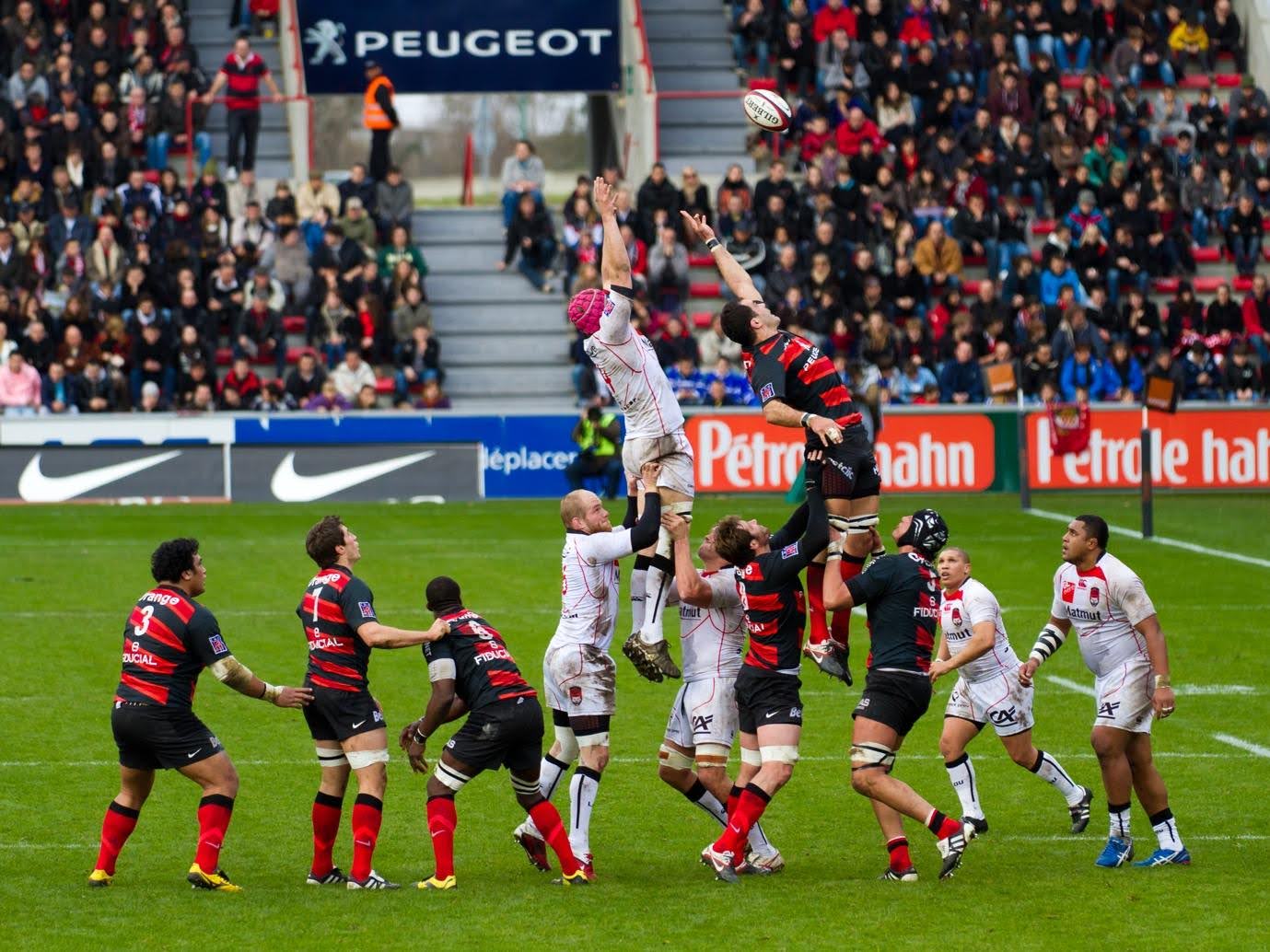
A lineout in rugby.
These would be the main differences between Rugby League vs Union.
More Details on the Game
Rugby League and Rugby Union have slight differences in how game time is managed.
- Both Rugby organisations’ games consist of two halves.
- Each half lasts 40 minutes, with a halftime break.
- Total 80 minutes of gameplay.
- However, the Rugby Union has slightly longer halftime breaks, ~15 minutes, compared to 10 minutes for the RFL.
The key differences lie in time management. Rugby Union often adds stoppage time at the end of each half to account for injuries and other delays, similar to football. This time is not typically counted in the Rugby League. This particular detail is a significant part of why Rugby Union games last longer, though the actual playing time remains similar.
Rugby League vs Rugby Union – Top Competitions & Tournaments
Each rugby code is like a separate republic. It has different competitions serving as its most prestigious and coveted events.
The Rugby World Cup is the pinnacle of the more amateur-focused Rugby Union. Like FIFA’s World Cup, it’s held every four years and hosts the top teams from around the globe.
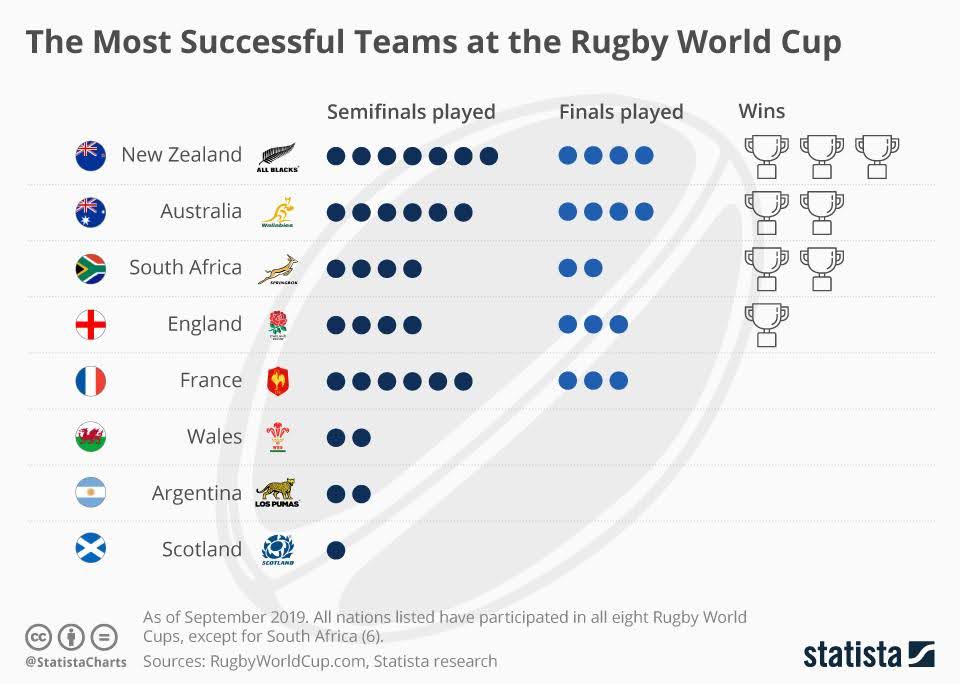
A table with the most winning teams from the Rugby World Cup.
The Six Nations Championship is another crucial tournament. In a round-robin format, it’s a traditional event involving 6 perennial European heavyweights, England, France, Ireland, Italy, Scotland, and Wales.
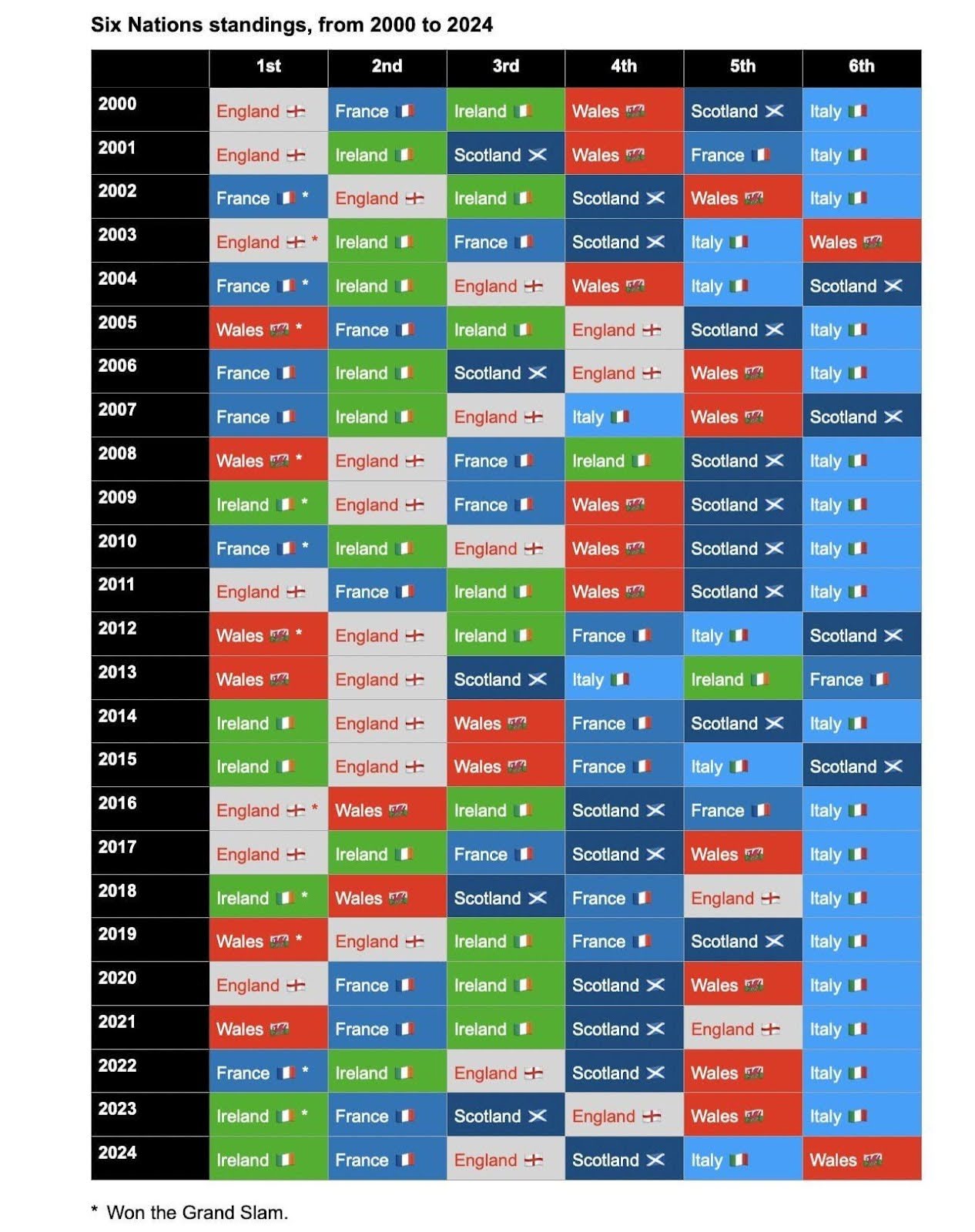 Here’s the table with the most recent winners and standings.
Here’s the table with the most recent winners and standings.
Coincidentally, the Rugby League also hosts their own version of the WC as Rugby League World Cup. Just like a carbon copy, the event is also held every 4-years. As history shows, it’s been dominated by the Australian squad, which won 12 out of the 16 World Cups and three-peated in 2021.
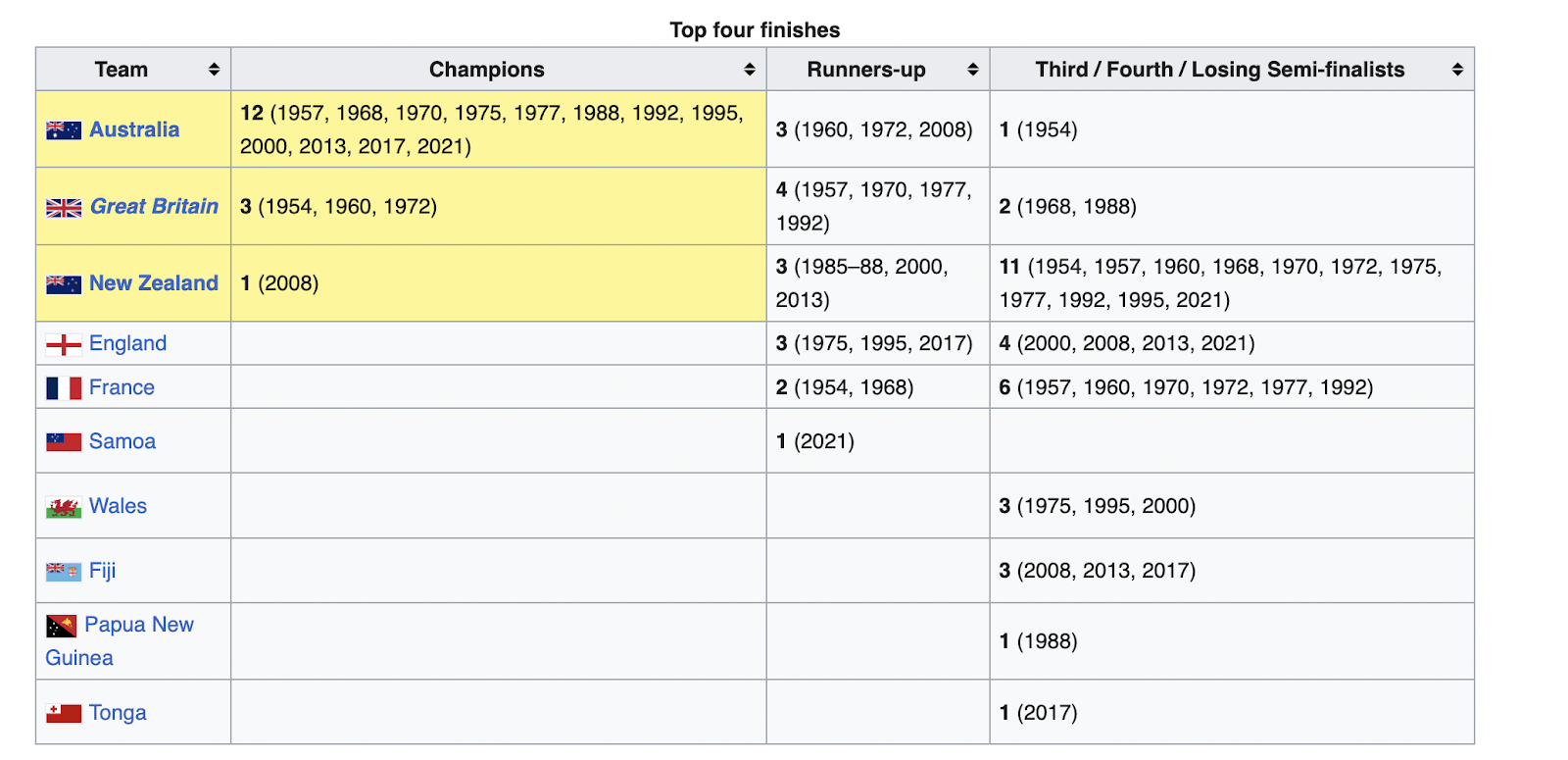 Regarding RFL, we also have to tip our hats to domestic competitions like the Super League, which involves clubs from England and France. These tournaments are top-notch and breed fierce rivalries between players and teams whilst also promoting rugby as a sport on a global scale.
Regarding RFL, we also have to tip our hats to domestic competitions like the Super League, which involves clubs from England and France. These tournaments are top-notch and breed fierce rivalries between players and teams whilst also promoting rugby as a sport on a global scale.


